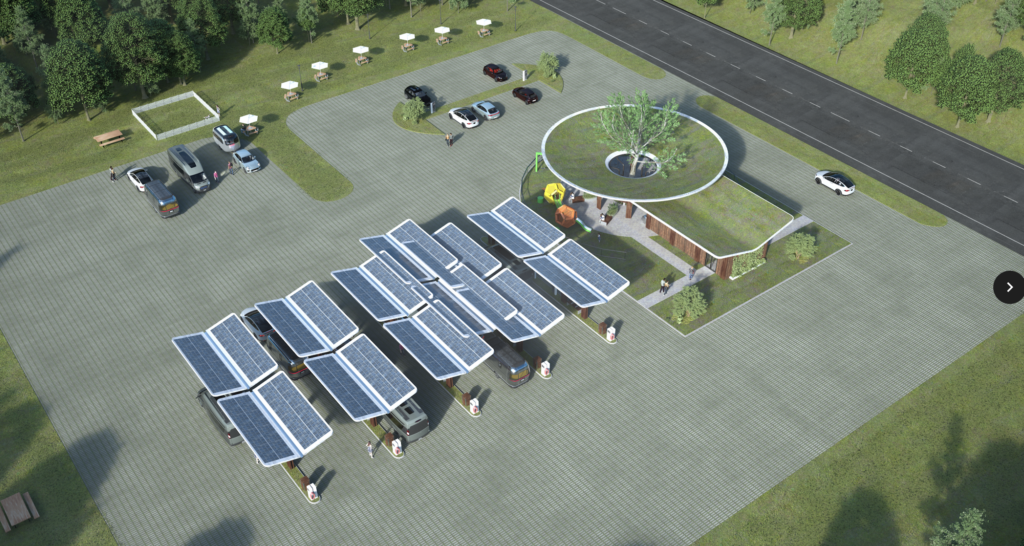As states decide how to spend unprecedented amounts of federal funds directed to the expansion of electric vehicle infrastructure, RV industry leaders want officials to keep the country’s recreational travelers in mind.
Elkhart-based THOR Industries has partnered with the RV Industry Association (RVIA) to commission a report on the EV landscape that begs the question: Are current plans to build and expand electric vehicle charging stations inclusive of all drivers?
Key to their pitch is consideration for a growing sector of travelers who are using electric vehicles, like trucks or SUVs, with a hitch to tow RVs, boats or utility trailers behind them.
“For the RV industry, the real hurdle we’re trying to overcome is that the vast majority of charging in the country is pull-in charging,” said Jason Rano, RVIA vice president of government affairs. “If you’re driving a passenger electric vehicle, the charging port is usually on the front of the vehicle on either side. You pull head in into a charging port and you plug in and you’re fine. Now, if you are pulling a towable RV, which is upwards of 90% of our industry, then that doesn’t really work, right?”
Why pull-through charging?
An alternative to the pull-in charging design, which often forces towable drivers to decouple their trailers or take up multiple spaces, is a concept called pull-through charging which allows drivers more room to maneuver without unhitching their vehicle.
The conversation comes following the U.S. Department of Transportation’s creation of the National Electrical Vehicle Infrastructure (NEVI) program, funded by $5 billion from 2021’s Bipartisan Infrastructure Law.
That money will be allocated to individual states – Indiana, for example, is slated to receive nearly $100 million over five years – to contract with EV partners to build out charging infrastructure coast to coast.
The NEVI program funds 80% of charging station installation with five years of operations and maintenance with the remaining 20% to be picked up by site-owner operators.
Many states now are in the process of requesting proposals from interested parties seeking to own, operate and maintain charging stations.
As that happens, Rano said, the RV industry would like states to incentivize vendors that incorporate pull-through charging in their plans. After all, RV drivers – unlike small vehicle drivers who do most of their charging at home – have the most to lose if not included in plans, industry officials say.
RV travelers are more likely to take longer trips requiring multiple stops to charge and burn through battery range quicker than the average driver. Though there is not an industry-adopted figure on the effect of how vehicle towing affects electric battery range, one Rivian case study found an R1T electric pickup experienced a 50% reduction in range with a 6,500-pound trailer attached.
“If you’re a state that is big on outdoor recreation and doesn’t plan for this, it could impact visitation,” Rano said. “It’s a $140 billion industry across manufacturing, supplying, dealers and campgrounds. We understand the economic impact of this industry.”
Read the full interview with Inside Indiana Business here.
